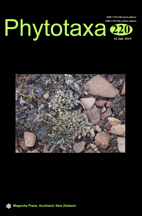Abstract
In tropical forests, one of the most commonly encountered relationships between parasites and insects is that between the fungus Ophiocordyceps (Ophiocordycipitaceae, Hypocreales, Ascomycota) and ants, especially within the tribe Camponotini. Here, we describe three newly discovered host-specific species, Ophiocordyceps camponoti-atricipis, O. camponoti-bispinosi and O. camponoti-indiani, on Camponotus ants from the central Amazonian region of Brazil, which can readily be separated using morphological traits, in particular the shape and behavior of the ascospores. DNA sequence data support inclusion of these species within the Ophiocordyceps unilateralis complex.

